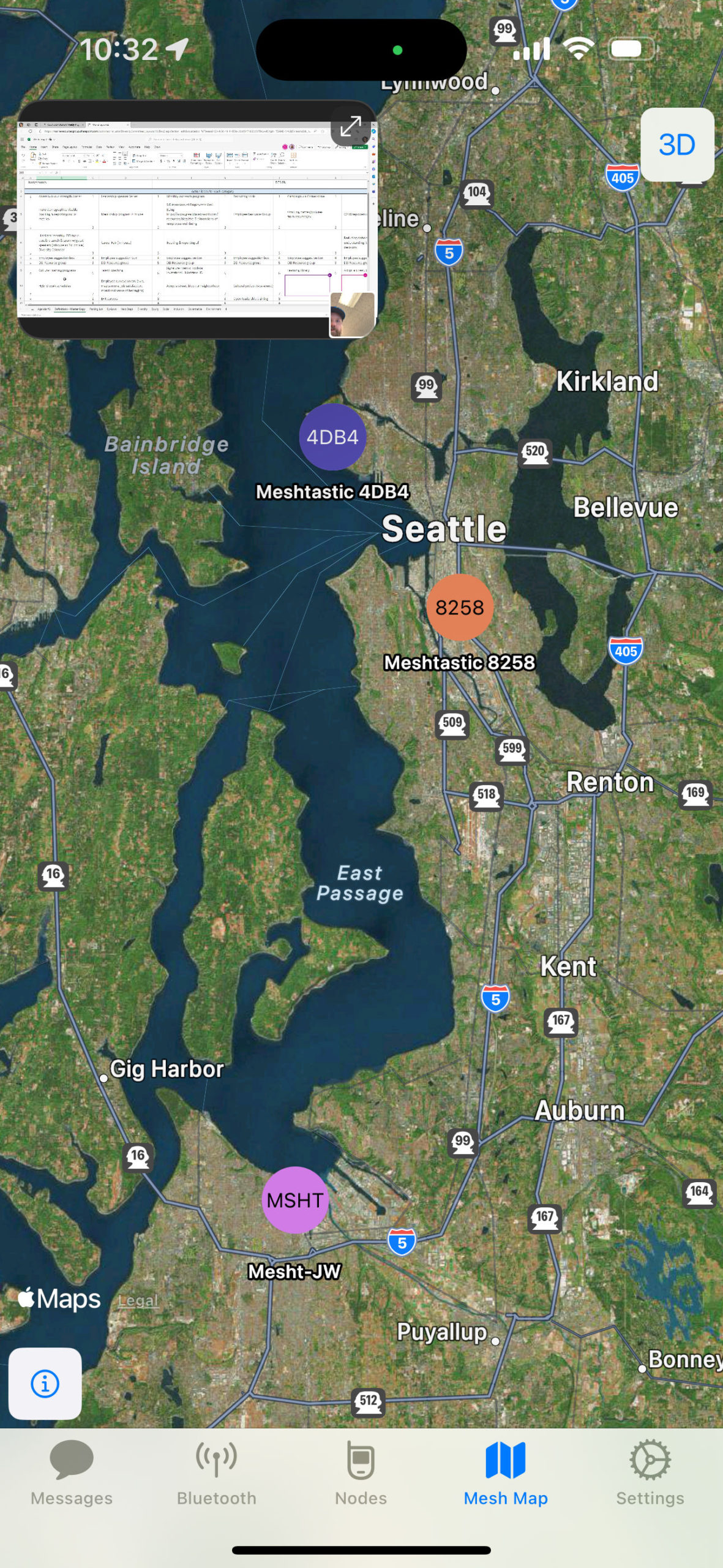I found these funny little radio things called Meshtastic. There’s no real … like actual daily usage for them, except they are fun, and do neat stuff. In My Opinion.
Here’s what they do: the devices have two sides. One side is a radio that send (Tx transmit) and receive (Rx receive) on the 902-928MHz range. The other side will be Bluetooth or wifi for you to connect with your phone and communicate with the radio. That’s really all there is at the most basic level.
Why is it called “LoRa?” Apparently it’s Long Range, but I’m not sure what makes 928MHz any longer than say other stuff (all frequency allocations USA pdf). T-mobile cell phones also talk over radio transmissions. A couple of frequencies they use are 600MHz, 1900MHz, 2.5GHz. I think, generally, the higher the frequency: more data, less distance. Apparently cell phones will vary their Tx power between 0.6 watts, up to 3 watts if you’re deep in the country. I think meshtastic tops out at 0.6 watts. But: we can put big fun antennas on them!
The software that’s becoming popular (source needed) is called Meshtastic. They’ve chosen to make a slick app, offer their firmware for free, use encrypted text messages, and mesh the radios. This has some really cool side effects.

Slick app. You generally use your phone and a Bluetooth or wifi connection to connect to a radio that’s withing 30 feet or so. We’re all used to phones. We have them with us most of the time, and this software and hardware ecosystem doesn’t discount that.
Free firmware. The folks at meshtastic.org are volunteers. I don’t know why they do what they do, but I appreciate those that know how to do it, do it. There aren’t too many hardware radios that use this stuff, so it isn’t too complicated yet.
Encrypted messages. Similar to other encrypted messaging apps (signal) no body can read your messages; only you and the person you’re sending to. This is cool, but also makes for a few more authentication steps when trying to send messages from several devices at once (phone, work computer, laptop).
Meshing. I saved the best for last. For you to send someone a message, your little radio doesn’t have to be able to hit them directly. Other devices around will forward your messages. I’m able to send a message past Seattle. Here’s a map that I had after leaving a radio in a window at work for a couple of days. My radio could only reach one other guy across the water, MSHT. That radio, however, was able to get all the way to Seattle.
So right, kinda neat. Kinda nerdy.
What you really need is a use case; a real world scenario where you can use this stuff. Here are a few:

ATAK “Android Team Awareness Kit.” Developed by the feds for military stuff. It’s been released to the public, and folks are using it. Here’s wilderness firefighters using it. The radios simply broadcast their position over LoRa. Those pings of GPS coords mesh together, and each person gets a full picture of where other people are at. The coolest hardware version I’ve seen of these are the (difficult to find) Lilygo T-echos. The information and connectivity really shines when there is no cell service around. These little things send their own signal and don’t depend on the number of Verizon bars to function.
See how it’s also a little covert, anarchist, and subversive?: Cool!
I used the Find My app on our Apple phones while we were at Disneyland. It was so great to be able to find friends with live dots on a map. It also depended on cell service for each person. Same thing with Tiles, or Airtags: they’re only Bluetooth. They talk to any iphone within reach of Bluetooth. Then the iphone sends that to the cloud: so-and-so airtag was within 30 feet of that location at that time. Works great when many people have: iPhones, data service, and a paid up plan.
What if loads of phones had this tech? It is free. It is low power. Phones could text one another without cell towers. It could be a “disaster proof” technology.
So ya, it’s more than a little quirky. But that’s never stopped me before.
